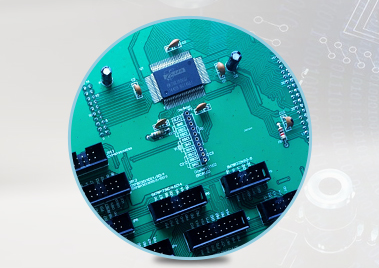The difference between the two
●Software and hardware components: MCUs mostly involve some simple peripherals, such as serial ports, I2C, ADC, LCD (small screen and resolution)
●Embedded systems involve more complex peripherals, such as networks (wired network cards, wifi, Bluetooth, etc.), USB, audio and video codecs, etc.
Career Development
●The learning path of microcontroller is short, the career is flat, and the salary development reaches the bottleneck very early. The general bottleneck salary is 6~8k
●The embedded learning route is long, the career is long, and the salary will reach the bottleneck only after many years of development. The general bottleneck salary is 12~15k.

The difference between embedded and microcontroller
1. The difference in system structure between single-chip microcomputer and embedded system (1) Basic structure of single-chip microcomputer. Single-chip microcomputer consists of arithmetic unit, controller, memory, and input and output devices.
(2) Embedded system components:
Embedded systems generally consist of embedded microprocessors, peripheral hardware devices, embedded operating systems, and specific applications.
The first step in embedded system planning is to comprehensively consider the system’s requirements for cost, performance, scalability, development cycle and other aspects based on specific applications, determine the main control device of the system, and build system hardware based on it. channel.
2. The difference in hardware composition between single-chip microcomputer and embedded microcontroller. Single-chip microcomputer contains a microcontroller circuit and some general input and output interface equipment in an integrated circuit chip. From the perspective of the method of constructing the embedded system, according to the development level of modern electronic technology, the embedded system can be completed with a single-chip microcomputer or other programmable electronic equipment. Other hardware equipment depends on the needs of the target application system.
3. Differences in software composition between microcontrollers and embedded microcontrollers. There is no application program in the general-purpose microcontroller shipped by the manufacturer, so it cannot be run directly. After adding the application program, the microcontroller can operate independently. The embedded system must have control software. The method of realizing the control logic can be completely using hardware circuits or software programs.
4. Differences in primary and secondary relationships between microcontrollers and embedded microcontrollers. Microcontrollers are now considered to be general-purpose electronic devices, with the microcontroller itself as the main body. The embedded system is subordinate in terms of physical structure, and the embedded system is embedded and installed in the target application system. The embedded system is dominant in the control relationship and is the logical processing system that controls the operation of the target application system. Although embedded systems can be constructed in different ways, once constructed, the embedded system is a dedicated system. In a dedicated system, the software of the programmable device can be implanted during the system construction process or directly generated during the device manufacturing process to reduce manufacturing costs. Monolithic machines with complex control logic require operating system software support; embedded systems with simple control logic may not require operating system software support.
The relationship between microcontroller and embedded system
According to the definition of IEEE, an embedded system is a device used to control or monitor large-scale systems such as machinery, equipment, or factories. From the definition, we can see that in fact, the previous control devices and single-chip microcomputer systems should also belong to the field of embedded systems.
We can understand in this way that embedded systems are a major category, and microcontrollers are an important subcategory. As the name suggests, an embedded system is a system embedded in other systems. For example, embedding a posture control system in a car system can make car driving safer and more efficient; introducing an automatic control system in a power supply system can make the power supply work more stably. The posture control system and the automatic power control system here are embedded systems.
Systems composed of microcontrollers are generally used for automation and industrial control functions. These functions are generally not used independently and need to cooperate with other systems. Therefore, in a broad sense, the application of microcontrollers is generally a branch of embedded systems. Nowadays, due to the widespread use of embedded systems, there are also embedded systems that are not microcontrollers, such as mobile phones. Application processors are added to the basic functions of mobile phones (calls, text messages) to make their functions more powerful. However, due to the manufacturing process The problem is that high-end mobile phones cannot yet be fully integrated (the one that is integrated is a copycat phone), but it is also a branch of the embedded system.
This article recommends: Concrete mixing station equipment remote monitoring system solution
